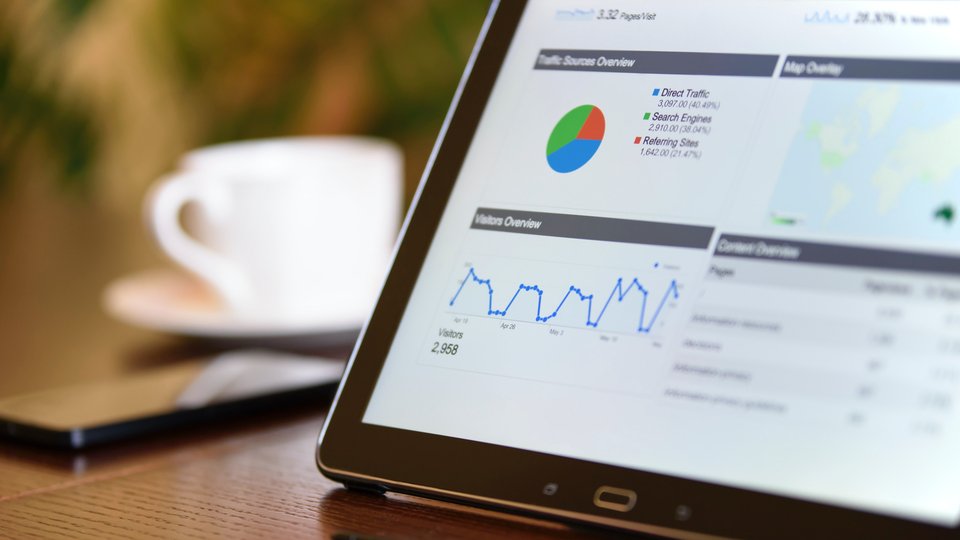The 5 Most Important Website Metrics for Independent Hotels

It’s easier than ever before for hospitality marketers to utilize their website data to make marketing decisions and optimizations, but all that data can be daunting to look at.
While tools like Google Analytics provide a vast amount of insight into your website traffic, engagement and users, it’s only useful if you know how to best act on it. Have you been wondering what metrics are most important for hospitality marketing? Are you trying to find data that will help you better optimize your email campaigns or advertising efforts? We broke down five of the most important analytics for hoteliers and how you can best utilize them.
1. Tracking your hotel website’s bounce rate
One of the most important metrics to measure engagement on your hotel’s website is bounce rate, which measures single-page sessions on your website. This means that when a traveler arrives on a page of your website and exits from that same page, it counts as a bounce. To calculate bounce rate, Google and other data providers calculate the percentage of all sessions on your website where a user viewed only one, single page.
Bounce rate is important to monitor because a high bounce rate tends to signal low engagement. But it’s important to look at bounce rate through multiple lenses. First, more important than your hotel website’s overall bounce rate is viewing the metric across individual pages. Is your bounce rate high on your homepage? Is it worse on interior pages? Understanding which pages are producing higher bounce rates will allow you to determine why people might be leaving after just one page view. For instance, if your bounce rate is high for a specific email or advertising campaign, you may need to adjust the audience or content.
Is a high bounce rate always bad? Not necessarily. While every hospitality marketer strives to have a high-engaging website with a low bounce rate, it’s only one part of the story. Someone could land on one page — say your hotel’s Restaurant & Dining page — read it for two minutes and exit without taking any other actions. While this would count as a bounce, it’s possible the user gathered all the information they needed and returns later or calls your hotel.
2. Seeing where users are exiting your website
One of the often overlooked metrics is exit rate. While many hoteliers focus on how people are coming to their website and how long they spend there, where people are falling off, or exiting, can sometimes get lost. But looking at exit rates can tell hospitality marketers a lot about their website’s performance and potential areas for optimization.
Your website’s exit rate is calculated by taking the total number of exits on a particular page and dividing it by the total number of page views on that page. When you have insight into what pages have the highest exit rate, you’re able to see what’s causing the exit. A high exit rate isn’t bad by default — people are going to exit — but if you’re noticing a high exit rate on a page involving your booking process, it should put up a red flag. Is your booking engine slow? Is the process unclear? Similarly, if there is a page with a high exit rate, you may find a way to improve the page with a call-to-action that keeps the traveler moving through the customer journey.
3. Where is your traffic coming from?
While the metrics above can provide hospitality marketers insight into how travelers are engaging with their website, it’s equally important to know where they’re arriving from.
Using Google Analytics’ Acquisition dashboard, you can see what channels are driving traffic to your website. This includes Organic Search, Display/Paid Search, Email, Referral, Social, and Direct. Once you know where a user is coming from, you can drill down into specific metrics such as bounce rate or exit rate within each channel. Is your organic traffic low? You may want to look into an SEO strategy to increase your hotel’s keyword rankings on Google. Is your bounce rate high on email? Maybe your strategy needs to be altered.
Knowing what channels are (or aren’t) producing can help inform your overall marketing strategy. Not all traffic is good or qualified traffic, and data can offer important insight.
4. Drill down your target audience
All marketers want to know their audience, but it’s sometimes easier said than done. Gaining insight into your hotel website’s audience allows you to better speak to them. It can also tell you if you’re reaching them in the most beneficial ways (such as social media or advertising).
There are four important audience metrics to monitor with Google Analytics:
Location
With Google Analytics, you’re able to get granular data about where your traffic is coming from, starting as broad as their state and drilling down into specific cities. Utilizing this data, you can determine the best advertising targets.
Device
You want users to have the best experience possible on your website. Part of achieving that is knowing how they’re viewing it. With Google Analytics, you can see what percentage of users are coming from desktop vs. mobile vs. tablet and then drill down into specific screen sizes and browsers. See a handful of highly-used devices? It’s important to make sure your website operates as intended on them.
Age & Demographics
Knowing the age of your audience can be extremely beneficial. When you know the most common age ranges of your website’s visitors, you’re able to write better targeted content and put out better advertising campaigns. Google Analytics can tell you what percentage of your website’s users are in the following age ranges: 18-24, 25-34, 35-44, 45-54, 55-64, and 65+. Additionally, you can see gender and language breakdowns.
New vs. returning users
Ever wonder how many of those direct bookings come from new vs. returning users? This can be a valuable audience metric to help you determine what might be resonating and how effective your website is at bringing users back to convert.
5. Find your conversion rate by channel and device
How effective is your hotel website at converting visitors into direct bookings? By better understanding specific conversion actions on your website, you’re able to see how many sessions it typically takes for you to convert a user into a booking.
Google Analytics allows you to set conversion actions and measure your Goal Conversion Rate. This means you could set specific buttons or calls-to-action on your website as conversion goals. You can calculate your hotel website’s conversion rate by taking your total sessions divided by total bookings in that same time period.
According to a study done by Fastbooking, the average conversion rate for hotel websites is 2.2%, though that number can vary for a variety of reasons like hotel location and hotel type. By using Google Events and conversion rate together, you can get a better idea of how many users click to book and then abandon their booking. Additionally, drilling further into conversion rate by traffic source, location, or device can provide you with insight into what marketing tactics are and aren’t performing.
Keeping track of your hotel website’s data can be a difficult task. If you’re looking for more insight into setting up analytics tools or best utilizing your data, see how we can help. In the meantime, check out our other hospitality marketing tips.

